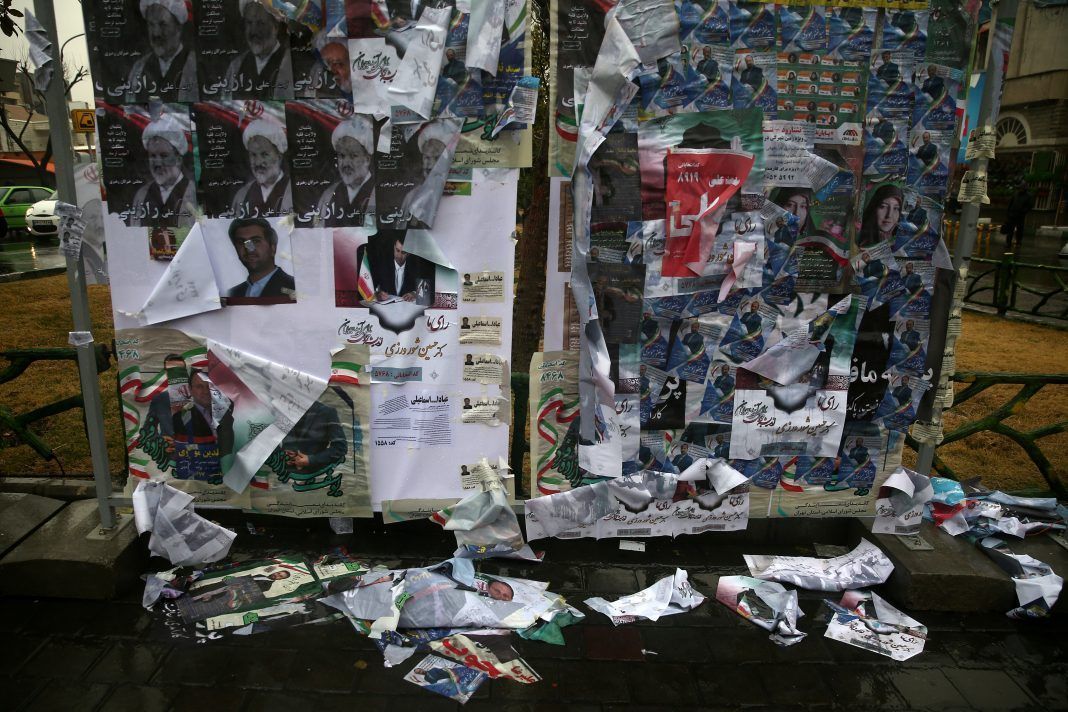By Parisa Hafezi
DUBAI, Feb 20 (Reuters) – Campaigning officially ended on Thursday for Iran‘s parliamentary election, a day before a vote seen as a litmus test of the popularity of the clerical establishment.
Street cleaners were out early stripping posters and banners off walls to clear the way for Iran‘s first poll since U.S. President Donald Trump pulled out of a nuclear deal with Tehran in 2018 and reimposed punishing sanctions.
With Iran facing growing isolation on the global stage and discontent at home over economic hardships, analysts have said the turnout will amount to a referendum on the leaders’ handling of the Islamic Republic’s political and economic crises.
Supreme Leader Ayatollah Ali Khamenei has said voting is “a religious duty” but some prominent pro-reform politicians in Iran and activists abroad have called for a boycott of the election.
“We need to launch a strong boycott campaign to respond to the repressive policies of the system,” jailed human rights activist Narges Mohammadi said from her cell in Zanjan city in a message posted on her husband’s Facebook page this week.

Iranian activists and opposition groups are distributing the Twitter hashtags #BoycottIranShamElections and #VOTENoVote widely on social media.
The vote to pick 290 lawmakers will have no major influence on foreign affairs or Iran‘s nuclear policy, which is determined by Khamenei, whose hardline loyalists are likely to dominate the parliament.
The Guardian Council, which must approve candidates, has rejected about 6,850 moderate or leading conservative hopefuls in favor of hardliners from among 14,000 applicants seeking to contest Friday’s vote.
“We anticipate 50% of people will participate in the election,” Abbasali Kadkhodai, the spokesman for the Guardian Council, told a televised news conference on Wednesday.
Turnout was 62% in the 2016 parliamentary vote and 66% of people voted in 2012. About 58 million Iranians are eligible to vote.
While establishment supporters will vote for hardline candidates, many pro-reform Iranians are furious over the handling of November protests against fuel price hikes that soon turned political, with demonstrators demanding “regime change”.
A crackdown overseen by the Revolutionary Guards killed hundreds and led to the arrest of thousands, say human rights groups. Iranian authorities accused the Islamic Republic’s opponents and foreign foes if igniting the unrest.
‘Our Enemy Is Here’: Iran Protesters Demand Khamenei to Quit
[aesop_image img=”https://kayhanlife.com/wp-content/uploads/2020/02/Ballotbox_-2020-02-07.jpeg” panorama=”off” credit=”Cartoon By Behnam Mohammadi” align=”center” lightbox=”off” captionsrc=”custom” caption=”Let the battle continue …setting the stage for drawing voters to the ballot box.
” captionposition=”left” revealfx=”off” overlay_revealfx=”off”]
Many are also angry about the accidental downing of a Ukrainian passenger plane in January that killed all 176 people aboard, mainly Iranians. After days of denials, Tehran acknowledged the Guards were to blame.
(Writing by Parisa Hafezi; Editing by Clarence Fernandez)


